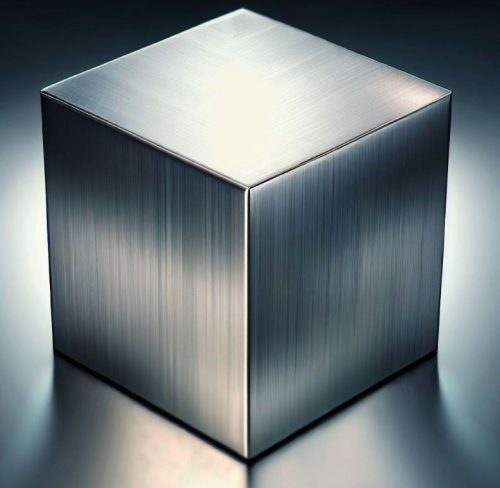Hafnium is element 72 on the periodic table. It is a tetravalent transition metal colored silver gray and is often found in zirconium, its sister element. Discovered in 1923 in Copenhagen, it was named after the city’s Latin name, Hafnia.

Hafnium is used in many industries and hi-tech applications. Some of these include: coatings of nuclear materials in power plants, alloying agents in superalloys, coatings on cutting tools and optics, and in the production of semiconductors. Current demand for Hafnium is just 75 to 80 tons a year. Primary sources for Hf raw materials come from Australia, South America, and China. Supply of the material is estimated at 67 to 72 tons per year. A portion of the superalloy demand is fulfilled with scrap and recycled material.
The largest market for hafnium is the superalloy industry. It is estimated that about 55% of demand comes from producers of alloys which are most commonly used in turbine blades for either aircraft engines or land based turbines in power plants. Because engineers are always seeking new space age materials to improve performance, hafnium is expected to see significant growth in this industry. The metal has been shown to allow aircraft engines to run hotter while being safer and using less fuel. Additionally alloys such as C-103*, a Nb-Hf-Ti alloy is commonly used to make rocket nozzles as it stands up to high temperatures and corrosive chemicals.
Another 15% of Hf demand comes from nuclear power plants which use Hf to coat their nuclear fuel. Because the material is able to absorb neutrons, it is ideal for such applications. There are a significant number of nuclear power plants throughout the world, and that number is ever increasing. Hf demand will be strong for this market as the power plants will utilize the material in both the nuclear reactor and the power generating turbine blades used to create electricity. Constant maintenance of these plants will assure the demand for years to come.
There are smaller applications as well. Roughly 8% of demand is for hafnium welding tips for use with plasma torches. Because Hf sheds electrons and can create an arc, it is an ideal material to use in place of tungsten.
Together, demand for hafnium chloride (HfCl4), hafniumoxide> ( HfO2)and pure hafnium for chemical vapor deposition (CVD) and physical vapor deposition (PVD) totals about 22% of the material demand. This accounts for a combination of end uses which include hard and protective coatings on cutting tools and optics, blue lasers for use in DVD players, and high-k dielectrics, where Hf is ideal to improve the miniaturization and reliability of electronic components.
For most electronic applications hafnium with .2 to .5 percent zirconium is used effectively. For select applications customers may require hafnium with less than .1 percent zirconium content. This grade is priced at a premium because of the difficulty and high cost to produce such high purity Hf.
If your business is seeking a reliable partner for the supply of high purity Hf target plates and discs, contact Admat Inc. (www.admatinc.com), a stocking supplier of electronic grade hafnium targets.
*C-103 is a trademark of Allegheny Technologies Inc.

